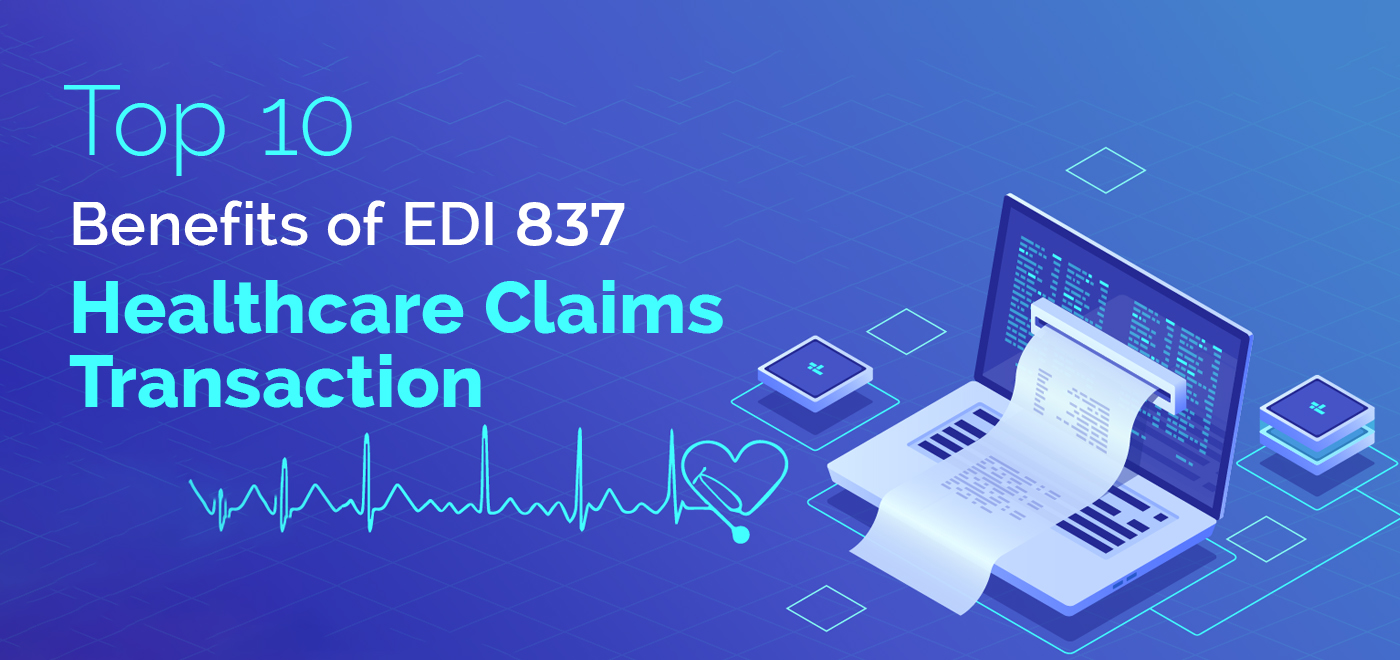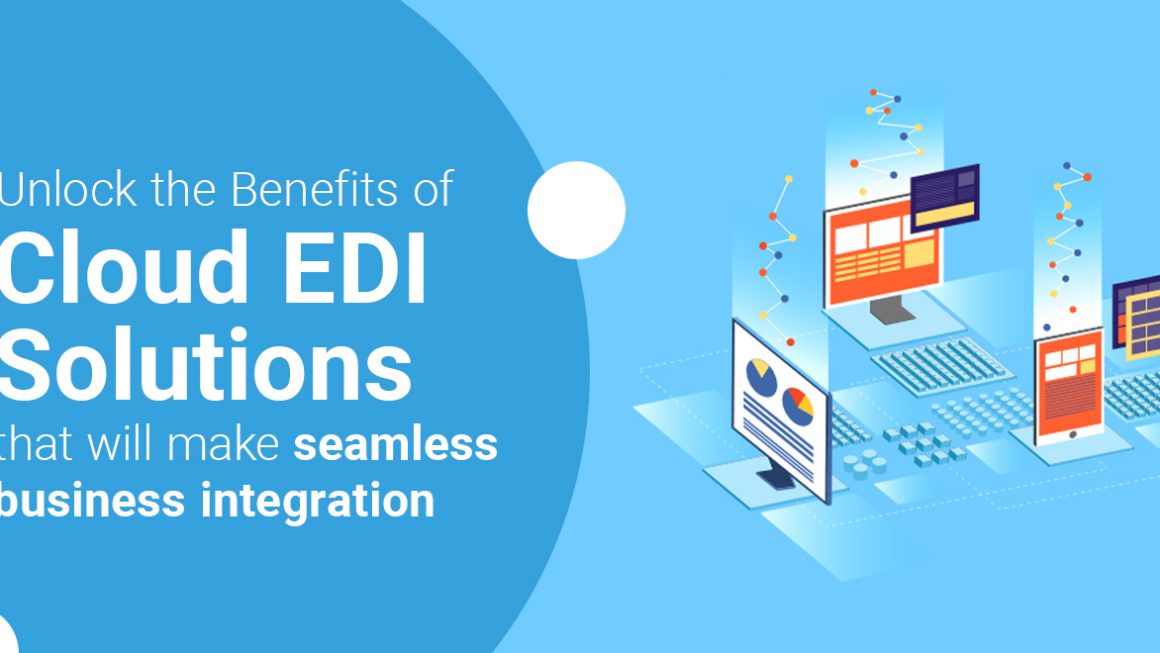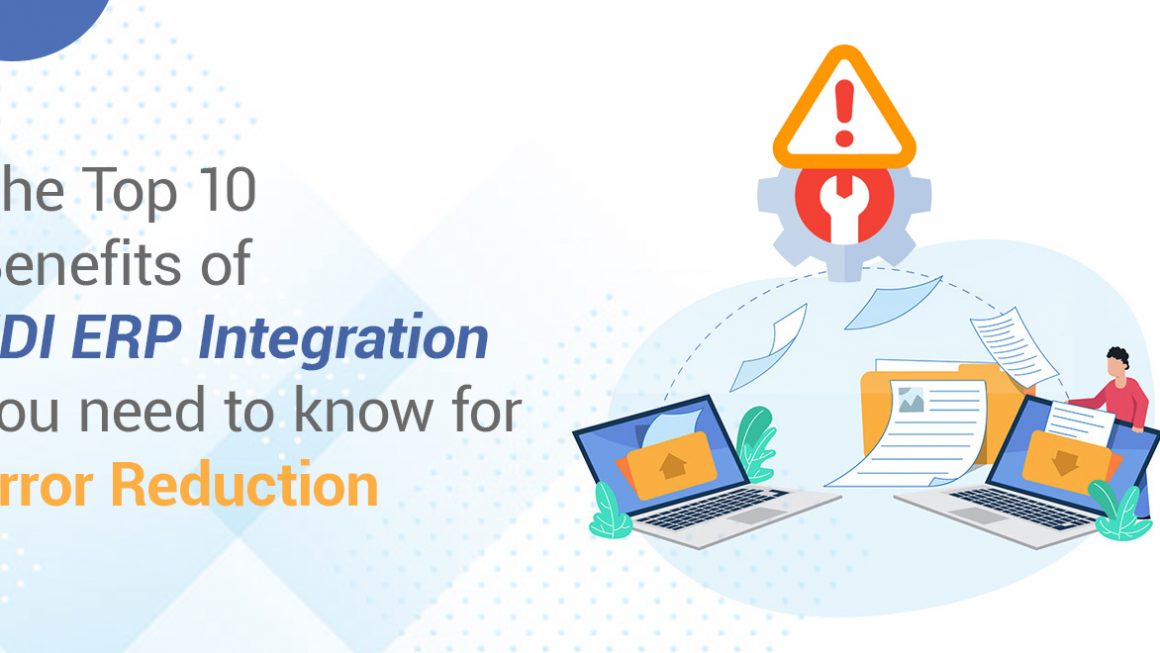Introduction
Every day, healthcare groups have to deal with a lot of information, like lab results, prescriptions, patient records, and insurance claims. But not every piece of info is the same. When you use different methods and formats, it can be challenging, expensive, and prone to mistakes in sharing data. About half of hospitals in the US think that the growing amount of unstructured data will make it harder to improve healthcare connectivity, which would hurt efforts to connect care. There is a safe way for hospitals to deal with these problems: healthcare EDI transactions. EDI 837 Benefits in Healthcare Claims Transaction can make a lot of healthcare tasks easier and faster, like billing, enrollment, making sure people are eligible, and recommendations.
Healthcare companies that use EDI transfers can save time and money while also improving the quality, accuracy, and security of their data. This blog gives a full rundown of EDI transactions in healthcare and explains how they can improve patient care and make processes run more smoothly.
What Is EDI In Healthcare?
Electronic Data Interchange is what EDI stands for. Information can be sent and used between computers through this method. EDI is a standard way for healthcare groups like hospitals, insurance companies, government agencies, and service providers to share healthcare data with each other. HL7 (Health Level Seven International) and X12 are the standards that are most often used in hospital EDI.
Many fields have relied on EDI for decades to send and receive electronic documents reliably and efficiently, especially when sending documents quickly with business partners, clients, or within the company. The exchange of data between healthcare institutions, insurers, and patients that is safe is called electronic data exchange (EDI). EDI 837 benefits make it possible for healthcare documents like medical claims, invoices, patient data, and prescriptions to be sent electronically using set formats and processes.
Types of Healthcare EDI Transactions
Companies that work in health care usually use 10 different kinds of HIPAA electronic data-sharing transactions:
1. Healthcare claim transaction set (837):
This lets patients and healthcare workers send in healthcare claims and encounter data.
2. Transaction for a retail pharmacy claim:
Healthcare companies and regulatory bodies can send claims to retail pharmacies. More than that, it lets them send billing and claim information for retail pharmacies to carriers
3. Set of transactions for healthcare claim payment and advice (835):
Insurers use it to give healthcare providers payment instructions and payments for Explanation of Benefits (EOBs).
This is the benefits enrollment and maintenance set (834), which is used by healthcare organizations that pay claims, insurance companies, unions, government bodies, and employers. Its goal is to get people to sign up for a health insurance plan.
4. Insurance products (820):
Payments are made through payroll deductions and other group premium payments for insurance products (820). Healthcare organizations use this transaction to send data to banks and pay insurance premiums.
5. Asking about healthcare benefits and eligibility (270):
Healthcare organizations use this transaction set to ask financial institutions and government bodies about healthcare benefits and subscriber eligibility.
6. Response to healthcare eligibility/benefit question (271):
Its main goal is to answer questions about a subscriber’s or dependent’s healthcare perks and eligibility. To send information to government agencies and financial companies.
7. Healthcare claim status request (276):
This transaction is used by healthcare providers to ask for or check on the state of healthcare claims that have already been sent to a payer, like an insurance company.
8. Notification of the state of a healthcare claim (277):
It’s used to let people know what’s going on with claims (EDI 837 transactions) that sources have already sent in. It is used by insurance companies and people who pay for health care.
It’s used by hospitals to get permission from a payer, like an insurance company, for healthcare service review information (278).
Before picking the best healthcare EDI transaction type for your company, you should look at its needs. Think about the standards in the industry, talk to trade partners, and follow the rules. This will help you make a smart choice for your healthcare business.
How EDI Works in Health Care
The EDI providers like the EDI service provider in USA work by making it easier for different institutions in the healthcare environment to send and receive electronic data in a safe and efficient way.
1. Standardized formats:
Different types of formats, like ANSI X12 or HL7, are used when sharing data through electronic data interchange services. These formats make sure that the data is organized in a way that is uniform and easy for both the sender and the receiver to understand. This makes sure that everyone involved in the process can clearly understand what was said.
2. Data translation:
Healthcare data is changed into the right EDI code before it is sent. To do this, data from internal systems like practice management systems or electronic health records (EHRs) must be changed into a standard file that is compatible with EDI.
3. Transmission of data:
Once the data is in EDI format, it is sent electronically between the sender and the receiver using safe methods like FTP (File Transfer Protocol) or AS2 (Applicability Statement 2). This helps make sure that info stays secure and private while it’s being sent.
4. Data validation:
The receiver checks the EDI data to ensure its correctness and adherence to the established rules and standards. Part of this process is checking data items like patient names, treatment codes, or insurance information against the right databases or reference systems.
5. Data processing:
After checking the EDI healthcare data, it is processed by the systems that receive it. This could mean updating patient information, making claims, processing payments, or doing other clinical and administrative tasks, depending on the exact reason of the EDI service provider in USA transaction
6. Thank you and answer:
The person who receives the EDI data will send either a thank you or a response back to the sender. This acknowledgment will let you know that the data was received. Also, may include extra details like payment information, claim acceptance, or problem messages.
How EDI Can Help You
EDI’s main goal in healthcare is to improve accuracy and the standard of care for patients by making administrative tasks easier. EDI 837 benefits is that by using instead of paper and manual work, healthcare groups can get rid of mistakes, cut down on paperwork, and speed up the flow of information.
Standardization:
The transfer of patient health information (PHI) is safer and faster when it uses standardized forms. EDI solution providers have made a big difference in the quality of healthcare data. Because it forces everyone to follow the same standards instead of different forms.
Lower administrative costs:
Since most of the data is digital, healthcare EDI provider lowers the costs of handling documents (like buying paper, forms, and supplies, and sending them). Medical companies can save $1 per claim by using EDI, while hospitals can save $0.86 and other parties can save $0.83, according to the Workgroup for Electronic Data Interchange (WEDI).
Higher security:
EDI transactions are a big part of making sure that suppliers, payers, and patients can safely share data with each other across the healthcare system. This is because EDI mapping changes business files into code that people can’t easily read. This makes it less likely that data will be stolen. Furthermore, HIPAA rules make sure that only authorized individuals can access the info, which further increases security.
Using secure protocols like AS2, MLLP, and SFTP for business-to-business file sharing, and all files are shared through them.
Better accuracy:
EDI makes exchanging data faster and more efficient. You can send and process data digitally instead of sending paper documents and waiting for the other party to enter data into their systems. This makes the time it takes to share data much shorter. EDI solution providers, the software helps medical businesses make their most important deals run more smoothly. It not only increases output, but it also cuts down on mistakes made by people, such as typos, wrong entries, and lost faxes or mail. In addition, all EDI files go through a lot of testing and approval. Snip Levels is a way to check that healthcare EDI files have all the necessary information on all seven levels.
Better efficiency:
Healthcare EDI makes things run more smoothly by letting different groups share data in real time. It also reduces rejections and requests for more work, and you don’t need to check if the recipient has received the information. This ensures that healthcare workers send important data on time and without any mistakes, reducing the administrative load and allowing them to make better use of their time.
Compliance:
Many places have laws that say healthcare organizations have to keep patient info safe. To help meet these needs, EDI systems can include data protection features.
How to get your healthcare system to work with EDI
To use EDI in your healthcare business, follow these steps.
Step 1: Think about what your business needs.
Before you can successfully use EDI in healthcare, you need to make sure you have clear standards and goals. Spend some time checking your own processes to see if they are ready to be combined.
Also, write down any problems you’re having or changes you want to make with EDI. If you need help figuring out if EDI will work for your business and what benefits it might have, you might want to talk to a qualified IT service.
Step 2: Choose a technical partner with a lot of experience
Find a trustworthy technology partner who has worked with healthcare EDI before. Make a detailed plan and strategy with your team for how to add EDI to your existing systems.
Starting by researching reputable software development companies on sites like Clutch, which provide scores and reviews that you can check, is a good idea. Pay close attention to how much experience the vendors have with EDI implementation. How well they know the laws and standards that apply to your business, and how well they can understand your specific needs. To ensure the privacy and security of important healthcare data, you should also assess their level of experience in data protection and compliance.
Step 3: Make EDI software and connect it to other systems
Together with your IT partner, make or pick healthcare EDI software that works for your business. Connect the EDI option to the ones you already have, like billing systems, practice management systems, or electronic health record (EHR) systems. Make sure that all of the systems can easily talk to and work with each other.
Step 4: Test and confirm EDI transactions
Thoroughly test and validate your EDI transactions to make sure they follow the rules and work with the systems of your trade partners. Check the accuracy and security of the data both when sending and receiving it.
Step 5: Train your own employees
The people who will be using the EDI system should be trained by your business. Tell them about the transaction sets, rules, and procedures that your business will use when you set up medical EDI. Make sure they know how to use the EDI program well and understand how it can help them with their daily work.
Step 6: Help with EDI
Stay in touch with and work with your IT partner to solve any issues, make changes, or make improvements to the EDI system. Keep up with changes to EDI standards or the law to make sure you’re following the rules and doing your best. Regularly monitor the performance of healthcare EDI services and make necessary adjustments to maximize their efficiency.
Conclusion
There are many EDI 837 Benefits in Healthcare Claims Transactions that make it a big improvement for the healthcare business. Its ten best benefits are faster and more accurate claims processing, less paperwork and administrative costs, faster reimbursement, better data security, and easier contact between healthcare providers and payers. It also cuts down on mistakes and makes it easier to follow industry standards. Also encourages a more sustainable and eco-friendly way of running healthcare management.
Because of this, EDI 837 service provider not only saves time and money for healthcare organizations but also improves the standard of care for patients as a whole. Today, it’s an important part of healthcare that makes the system more efficient, cost-effective, and seamless.
FAQs
1. What exactly is an EDI 837 in the healthcare industry?
In the healthcare industry, the term “Electronic Data Interchange (EDI) 837” refers to the standardized format for electronically reporting claims for medical services. It is a mechanism that makes it easier for healthcare providers. Also, insurance companies share critical information with one another.
2. What are the most important advantages of adopting EDI 837 for transactions involving healthcare claims?
The top EDI 837 Benefits include increased efficiency, lower administrative expenses, faster reimbursements, improved data security, streamlined communication, error reduction, compliance with industry standards, environmental sustainability, and enhanced patient care. Other benefits include environmental sustainability, compliance with industry standards, and enhanced medical care.
3. How does the use of EDI 837 improve the efficiency of the processing of healthcare claims?
EDI 837 automates the process of submitting claims, reducing the need for manual data entry. This results in faster processing of insurance claims, fewer errors, and quicker payments to healthcare providers.
4. Would you be able to elucidate the ways in which the EDI 837 helps minimize administrative costs?
The most EDI 837 Benefits considerably cut administrative overhead and associated costs, making the process more cost-effective. As a result of the elimination of the requirement for paper-based claims submissions and human data entry.
5. What features of EDI 837 make it possible for healthcare providers to receive reimbursements more quickly?
EDI 837 benefits in streamlining the claims process, reducing the time required for reviewing and authorizing claims. This, in turn, leads to speedier reimbursements for healthcare services.



